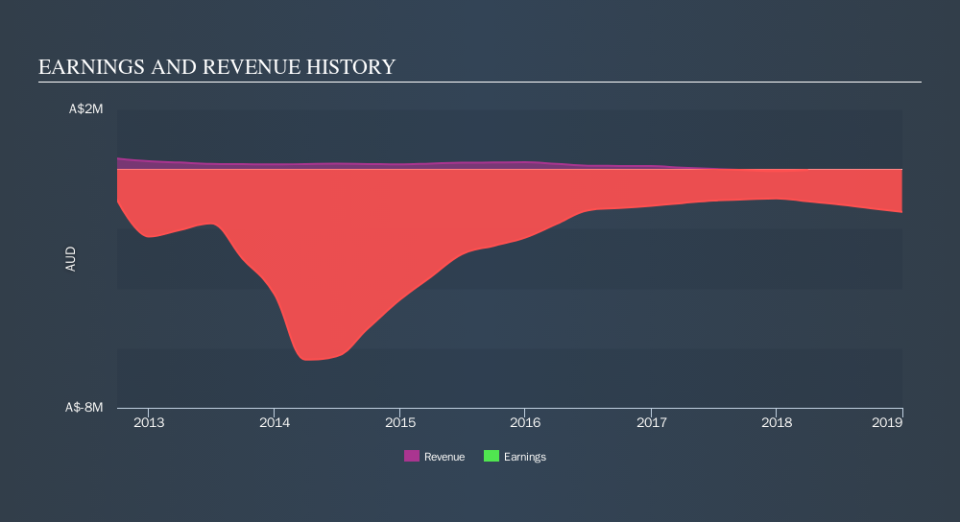Next Capital Raising For Carpentaria Resources Limited (ASX:CAP)?

As the AU$11m market cap Carpentaria Resources Limited (ASX:CAP) released another year of negative earnings, investors may be on edge waiting for breakeven. A crucial question to bear in mind when you’re an investor of an unprofitable business, is whether the company will have to raise more capital in the near future. Cash is crucial to run a business, and if a company burns through its reserves fast, it will need to raise further funds. This may not always be on good terms, which could hurt current shareholders if the new deal lowers the value of their shares. Carpentaria Resources may need to come to market again, but the question is, when? Below, I’ve analysed the most recent financial data to help answer this question.
See our latest analysis for Carpentaria Resources
What is cash burn?
With a negative free cash flow of -AU$2.0m, Carpentaria Resources is chipping away at its AU$1.2m cash reserves in order to run its business. The biggest threat facing Carpentaria Resources investors is the company going out of business when it runs out of money and cannot raise any more capital. Furthermore, it is not uncommon to find loss-makers in an industry such as metals and mining. Although these companies can be unprofitable now, they tend to take on project-work, which can payoff sometime in the future.
When will Carpentaria Resources need to raise more cash?
One way to measure the cost to Carpentaria Resources of keeping the business running, is by using free cash flow (which I define as cash flow from operations minus fixed capital investment).
Free cash outflows declined by 0.8% over the past year, which could be an indication of Carpentaria Resources putting the brakes on ramping up high growth. However, the current level of cash is not enough to sustain Carpentaria Resources’s operations and the company may need to raise more capital within the year. Even though this is analysis is fairly basic, and Carpentaria Resources still can cut its overhead further, or borrow money instead of raising new equity capital, this analysis still helps us understand how sustainable the Carpentaria Resources operation is, and when things may have to change.
Next Steps:
Investors can breathe easy knowing that Carpentaria Resources likely won’t be raising new capital any time soon. Although we haven’t accounted for all possible expenses for the company, on a high level, we believe the company doesn’t have an immediate cash problem based on this cash burn analysis. Now that we’ve accounted for cash burn growth, you should also look at expected revenue growth in order to gauge when the company may become breakeven. This is only a rough assessment of financial health, and CAP likely also has company-specific issues impacting its cash management decisions. I recommend you continue to research Carpentaria Resources to get a more holistic view of the company by looking at:
Historical Performance: What has CAP's returns been like over the past? Go into more detail in the past track record analysis and take a look at the free visual representations of our analysis for more clarity.
Management Team: An experienced management team on the helm increases our confidence in the business – take a look at who sits on Carpentaria Resources’s board and the CEO’s back ground.
Other High-Performing Stocks: If you believe you should cushion your portfolio with something less risky, scroll through our free list of these great stocks here.
NB: Figures in this article are calculated using data from the trailing twelve months from 31 December 2018. This may not be consistent with full year annual report figures. Operating expenses include only SG&A and one-year R&D.
We aim to bring you long-term focused research analysis driven by fundamental data. Note that our analysis may not factor in the latest price-sensitive company announcements or qualitative material.
If you spot an error that warrants correction, please contact the editor at editorial-team@simplywallst.com. This article by Simply Wall St is general in nature. It does not constitute a recommendation to buy or sell any stock, and does not take account of your objectives, or your financial situation. Simply Wall St has no position in the stocks mentioned. Thank you for reading.

 Yahoo Finance
Yahoo Finance 
